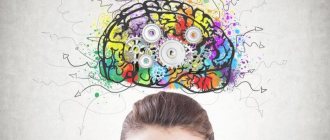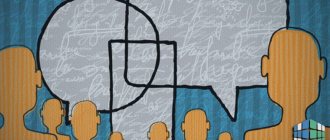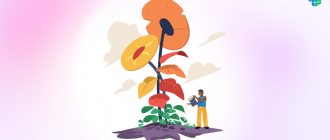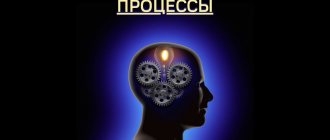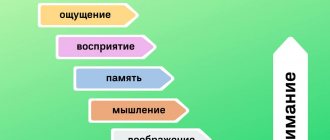Author: Eremchuk Lyudmila Gennadievna, neurologist. Researcher, Candidate of Medical Sciences.
In order to make an informed decision, it is necessary to develop a skill such as critical thinking. It involves a higher level of brain function than the normal way of thinking.
The ability to think critically is essential for personal development, but one is not born with it. Without it, a person will be constantly guided in the formation of a worldview. Will become an easy victim of religious, political and marketing technologies.
If a person thinks rationally, clearly defines the logic of different ideas, concepts and their interrelationship, then we can call him capable of thinking critically. Such an individual knows how to reason and analyze, is able to actively learn, and not be an accumulator of information.
The skills of such thinking cannot only include the ability to reason logically. Logic is just a necessary tool that allows you to find patterns, calculate the course of events, and skillfully and intelligibly justify your train of thought.
Critical thinking in psychology
Diane F. Halpern, a scientist from the USA, defines it as a type based on cognitive skills and the habit of thinking strategically and logically. She pays special attention to the fact that this is not an innate skill, and it is quite amenable to development.
Moreover, it needs to be developed. After all, a person who knows how to think critically is able to:
- be observant
- concentrate on the main thing,
- capture turning points and key moments,
- analyze the situation correctly,
- correctly justify your opinion,
- interpret correctly.
Professor, author of books on critical thinking, David Kluster, divides it into 5 types:
- independent,
- reasoned,
- generalized,
- social,
- evaluative.
Interesting read: Spatial Thinking
Examples
We find examples of critical thinking throughout the development of mankind, when the most important laws of physics, mathematics and other sciences were discovered. All discoveries are examples of asking the right questions, searching for meaning and patterns.
An example of the development of this thinking in elementary school is a teacher’s question about some phenomenon: “Children, where do you think it is better to learn swimming: at sea or on the river?” Thinking students will express an opinion and begin to come up with arguments. And if the teacher really wants to teach, he will first conduct an experiment and then ask the question again.
Well, this is such a primitive example, but it shows how to develop a child in the educational process. By the way, Newton, Einstein, and ancient Greek philosophers had the ability to think critically. It is thanks to them, in particular Hippocrates, that we still use the principles of dividing personality into types and treating diseases.
Development methods
Effective training for the development of critical thinking are online simulators that allow you to form and consolidate new skills.
How to train critical thinking online
The course lessons serve to develop the following skills:
- competent expression of thoughts,
- making effective decisions,
- ability to reason,
- ability to analyze.
These skills will be in demand if a non-standard practical task arises. When a problem arises in professional activity that cannot be solved with the help of existing knowledge and skills, the ability to think non-trivially can help.
Benefits of the course
Errors are human. Or more precisely, the brain. And these mistakes are well understood not only by researchers of mental activity, but also by those who want to sell their ideas or products. Propagandists and advertisers are well versed in the weaknesses of human thinking. Read more about these tricks in the article Neuroeconomics, the science that reads our thoughts and decisions
A critical mind will not allow your life to be manipulated and will keep you from wasting money, resources and time. Spend only 15 minutes a day on online training, develop the capabilities of your brain and achieve success in your career, study, and life.
Kinds
In psychology, there are two types of critical thinking:
- Weak. People of this type, as a rule, have a fairly high level of education and qualifications, but are pseudo-intellectuals with selfish motives. They believe that they are better informed on many issues than others; they are little concerned about the ethical side of actions and decisions. Weak critical thinking dictates looking for benefits everywhere. Such people constantly think: “What will I get in return, is it beneficial for me?”
- Strong. It is possessed by people who seek a logical essence without egocentric and social overtones. They will prefer truth to profit. Their intentions are always positive, and decisions are made based on the overall objective benefit, and not personal gain.
How do you know if you have critical thinking and to what extent? Tests will help determine this.
Simple and healthy habits for every day
Available at any age and do not require special equipment:
- Set your priorities. Analyze your goals and capabilities. Then the result will not be long in coming and new goals and objectives will appear at the next level of development.
- Evaluate your time. Think about where you spend your free time and how necessary this expenditure of resources is. Especially if you hang out on social networks, watch everything on TV or are into computer games.
- Review your day. Celebrate successes and mistakes made. Make a plan to reduce wasted time.
These simple tricks, if you turn them into habits and practice them regularly, will help you to be conscious of the reality around you. The brain is lazy, it is easier for it to act according to habit and patterns. Play on this, develop the habit of thinking about useful things and spending time wisely.
Problems of human degradation
So they are angry at machines, but the machines of the future free people from work. There will be no miners in the future. Coal will be mined by machines and automatically. We don't want people doing dirty or dangerous jobs! Do you understand?
People are not needed for this monotonous work. I'm against a girl like you standing behind a store counter. “Can I help you with something ma’am?” This is not working with your head. She sells bright lipstick and hair lotion.
A woman works like this for 18 years, and then she retires and you know what’s in her head? Hairspray, lipstick and that kind of crap!
If you typed text for a corporation for 17 years and retired, what’s going through your head? Corporate letters. This is not working with your head when people do monotonous work. We want to eliminate all monotonous professions. Automate them, free people.
For example, if a person works 8 hours a day, now he will work 4. The machine makes ten times more than you, so I will pay you more. But employers don't do that ! People are being laid off and fired, or their jobs are sent to China. Labor is cheap there.
It seems that he would pay the servants not 5 dollars and 65 cents per hour, but all 10 dollars. Then he’s a good guy, you say. He builds playgrounds for children who work at his factory. You can't go wrong with him, it seems. Do you understand?
However, in real life, you will be fired, and he will give all the work to China. So, if you were an employer, you would also start sending work to China, while forgetting about ethics.
How a critical mind is formed
A person of the modern era is under constant pressure from the opinions and judgments of strangers.
There is a lot of information, it has become comprehensive and is spreading through the media and the Internet very quickly. To develop critical thinking, it is necessary to question everything that agitators, propagandists and advertising specialists are trying to impose. Often they pursue their own benefit and their words are far from true.
You need to learn to separate truth from lies and shape your future based on a competent analysis of the situation.
To develop the right plan of action, the psychology of critical thinking recommends starting with self-analysis. To achieve your goals, you need to adequately assess your capabilities and potential. And engage in self-improvement, gaining new knowledge from the Internet and new books, taking care of your health and developing new skills.
Often, human behavior is determined by traditions and unspoken rules. When you find yourself in an unfamiliar environment, try to learn them as quickly as possible. Develop observation skills and collect information from available sources so that your actions are safe and your actions are effective.
Be attentive to nonverbal forms of communication. Analyze facial expressions, gestures, postures, compare what people say with known facts, and only after that start analyzing the information. Do not make hasty conclusions and avoid haste when making a decision. Rely more on your opinion, do not be a victim of fashion and political technologies.
You will also be interested in reading the article Development of thinking, training, games, exercises
key skills
Key skills are understood as a kind of algorithm with the help of which a person questions incoming statements and independently finds the answer to his questions.
Analysis
A person “sorts out” a difficult situation. Having analyzed the identified components of the problem, he finds its root and eliminates it. An analytical attitude allows you to replay the problem in your thinking; this is very useful, since the psyche independently tunes in to search for a way out.
Standardization
After the analysis, a person needs to choose the most suitable solution. This requires a standardization process, which helps to leave some actions on the machine and free up the necessary resources to complete tasks.
Differentiation
People with the ability to think critically can distinguish a necessary solution from an ideal one and choose the most optimal path. These decisions are often not the same.
Search for information
The ability to search for information, systematize it, process it and take advantage of it is available to few. Finding information from different sources on different topics is a necessary skill. This type of thinking can be developed through reading and writing.
Logics
Such people have excellent logic. They can select facts and draw conclusions based on the information received.
Anticipation
In order to move a little forward and determine your plan of action, you need to learn to predict the situation and its outcome. At the same time, if you come up with several outcomes of the situation, this will only be a plus for you, because then you will show your creativity.
How to study on your own
When using critical thinking there are three stages:
- Call. The accumulated knowledge and experience are made relevant. This shapes the mindset and motivates for further work, awakening interest in obtaining new information. The main purpose of calling up existing knowledge is to formulate your own goals and objectives.
- Information analysis. It is divided into two stages. First, new knowledge is analyzed, and in order to maintain interest in learning, this is done by moving from old knowledge to new knowledge. Based on the synthesis of old and new information, the formed goals and objectives are adjusted using a critical mindset.
- Reflections. New knowledge is correlated with long-known knowledge, the necessary changes and additions are made. Research activities stimulate creativity and new information is interpreted. As a result, new goals and objectives are set.
This technology, in the context of psychology, teaches you to work with information without anyone’s help, promoting self-education in general and creating independent thinking.
Reading with pauses
This technique involves measured reading of the text. The teacher reads part of the story aloud, pauses and asks a problematic question to the audience. Questions can be about associations, feelings, further development of the storyline, the ending of the story, but each of them should encourage the group to search for an answer and discuss.
Discussions are held in pauses, after which the teacher reads the next part of the text and breaks again.
Ways of thinking
There are only two of them. Thinking can either be critical or not. And to develop the first type, you also need to take two steps:
- admit that your own way of thinking is imperfect
- develop correct thinking regularly
But here are 5 strategies for developing critical thinking:
- Don't waste your time on meaningless things
- Assign one task for one day
- Create standards of thinking and stick to them. They mean accuracy, logic, significance, relevance
- Keep a diary describing situations, their analysis and assessment
- Change your character. Develop willpower, discipline and perseverance. Learn to think critically about your opinions
One type of uncritical thinking is creative. Creative and critical thinking interfere with each other. One opens up new ways to solve problems. And the other checks the suitability of these solutions to achieve the goals. That is, creativity generates new ideas, and a critical mindset reveals their shortcomings.
Venus Project by Jacques Fresco
In the future there will be no advertising, all this will go away. There will be no need to go to Fresco with questions: “Can I go on a yacht on Saturday?” You are already the 15th applicant. We have already configured more yachts than there was demand. So, ride to your heart’s content, you don’t even need to fill out anything!
You go into a restaurant and as soon as you sit down at the table the menu lights up without your action. A picture appears. And when the menu lights up, you can order out loud or using buttons.
And in the table there is a necessary sensor that scans you: whether you have diabetes or not. The recipe is immediately adaptable. You don’t have to say “I have diabetes” or “I can’t have whipped cream and honey together.” This won't need to be said.
This is what I mean by future directions. Tables and chairs will all be smart! You left the room and the lights went out! Saving. I don't have to extinguish it myself.
When you bring your phone or tablet closer, the focus becomes larger. Do you see? We haven't even begun to apply this knowledge in life!
We are still too primitive and they will not write about us in the future in history books. They, future generations, will not even be interested in reading us. We have technical, not political problems. A hundred years ago everything was fine with politics!
There were no other systems, well almost. There's the government in the picture, behind! Do you see the ground and the displays? This is the government of the future without people. Because people crap every time they get to power!
All rulers are bought and sold! They start wars, bring countries to crisis and never solve the problem! Here's how this power works:
- Department of Agriculture is a computerized system
- However, this is not one computer, but 6 connected by a circuit.
- If one computer breaks down, another one insures it.
Developing the ability to think critically in adults
You can learn critical thinking at any age. The most difficult thing is self-analysis and self-criticism. The ability to see yourself impartially from the outside is one of the main skills acquired in the learning process. In practice, this is the starting point from which the movement begins.
To teach critical thinking, the following tools are used during training:
- texts and working with them
- analysis of videos, films
- images, diagrams, tables
- information from the Internet
You have to think and make decisions on your own. Not all adults are able to do this. It’s easier to rely on the opinions of different authorities. Therefore, you have to learn slowly, taking one step after another:
- Be realistic first. Do not take other people’s opinions on faith, even authoritative ones, check the sources of information. Be passionate about your capabilities and skills.
- Keep your mind open, don't close your mind. A thinking person will not allow emotions to take over.
- Methodically and consistently collect and analyze information.
- Question what others say.
- Do not hurry. Approach everything thoroughly and do not jump from one task to another.
- Don't allow yourself to be manipulated. If a decision is made under pressure, then it is no longer yours, no matter how critically you view it.
- Emotions must be under control. Take any actions guided by reason, not feelings.
- Constantly work for the future, do not stop there.
- Challenge your abilities, aim higher.
If something doesn't work out, don't despair, accept it with humor. Try to keep your emotions positive. This way your assessments will remain objective and your mind clear.
Concept
Critical thinking is one of the types of thinking that I discussed in a separate article. Let's see what definition Wikipedia gives to this concept.
Critical thinking is a system of judgment that helps analyze things and events, formulate valid conclusions and assessments, and then apply the results to situations and problems.
To think critically means to perceive information rationally, clearly and impartially, and to always look for evidence of its truthfulness and reliability. In simple terms, this is a thought process when you don’t just accept information on faith, but question it, try to check for accuracy, know how to find inaccuracies and weed them out, separate facts from their interpretations, etc.
According to some scientists, it is the transition of society to a critical level of thinking that is a prerequisite for the beginning of civilizational development.
More than 100 cool lessons, tests and exercises for brain development
Start developing
People first started talking about critical thinking at the end of the 19th century. The term itself was coined by philosopher John Dewey. But only at the turn of the 20th and 21st centuries. The issue began to be explored in more detail. So in 1995, Richard Paul identified the classification and tasks of critical thinking.
Some psychologists today are inclined to believe that this type of thinking is a mental activity that allows you to control your decisions and actions, which increases the likelihood of getting the desired result. A critically thinking person, through logical conclusions, can draw conclusions, accept any judgment, reject or temporarily postpone its consideration.
Critical Thinking for Study and Career Development
This type can be considered as a technology for obtaining the necessary knowledge and developing professional competencies. This is one of the main skills of the future. To achieve success at work, use the following techniques:
- learn to understand verbal and non-verbal information,
- study the positive and negative sides of people and situations,
- be versatile, don’t miss anything,
- don't be categorical
- doubt and check
- evaluate not people, but actions.
Use these technologies as a means of developing the right attitude towards others.
Betrayal of scientists
It’s also interesting that scientists used to write books about “Why people won’t be able to fly” in their first books about what lies ahead. I don't know whether you saw them or not? They have not been published for a long time.
But the Right brothers didn’t read these books and made a flying car. When scientists do this, they betray the scientific method. Here's how to write correctly: “I personally can’t imagine how a person can fly” - that’s how you can write.
But you cannot write: “man will never fly” or “we will never get to the moon.” Write: “ I have no idea how to do this .” This is the image of speech of the future. This way you won’t make enemies and you won’t make anyone angry or offend anyone.
However, many people have developed strong egos. It's one of the most destructive things when you can replace the desire to share ideas with ego. This is the beginning of real development. Start with this. And it’s also good to tell people that you yourself were once the same and thought the same way.
Otherwise, it will turn out that you are talking down to you. This is unpleasant to listen to. Did you understand? Say: “ I was no less stupid than you ” or “ I also did a lot of stupid things .”
A person doesn't want you to be smarter than him. Do not forget! When faced with an egoist, and such people are called that way, he always tries to maintain his position as a leader.
Exercises to develop critical thinking
To develop your critical thinking skills, you can resort to simple exercises developed by psychologists.
"Tree of Predictions"
The exercise will help you learn to predict how a situation will develop, that is, develop the skill of extrapolation.
The exercise is performed as follows:
- in the center of the sheet you need to write down questions regarding an important situation or work task;
- formulate how events will develop and write down the hypothetical outcomes in the squares placed around the “problem situation”;
- analyze each outcome and evaluate its probability.
The exercise allows you to carefully analyze the situation and structure the available information.
"Memory card"
To learn how to select the data necessary to solve a problem, you need to be able to quickly capture emerging ideas. The easiest way to do this is to use the associative method and build a “memory map”.
A map is a diagram in the center of which important information about a situation is located. Options that arise during reflection or discussion are written around a central block. It’s especially great to use the exercise in the process of brainstorming, that is, a collective discussion.
"Cluster"
The main principle of the exercise is organizing information using grouping.
The main information is placed in the center of the sheet. From the central block, several options for the development of the situation are lined up. In this case, both the most probable and those whose probability of occurrence is minimal are taken into account. For each option, “clusters” are created with several solutions and their consequences.
Using the exercise, you can analyze cause-and-effect relationships and identify which actions will bring the maximum benefit.
"Basket of Ideas"
The exercise will help organize a discussion in the group.
First, the topic of the conversation is announced. After this, each participant must write down on a sheet everything that he knows about the issue, as well as his associations and possible solutions to the problem.
All information is subsequently used as a “data bank”. It is important not to criticize or evaluate other people’s ideas, but to accept them as a possible way to solve a problem or get out of a problematic situation.
"True and False Statements"
The exercise provides an opportunity to learn how to evaluate information in terms of its falsity or truthfulness. It is performed as follows:
- a problem situation is formulated that needs to be discussed;
- judgments about the situation are divided into two groups: correct and incorrect in the opinion of each participant in the conversation. If the exercise is performed alone, the person himself categorizes his statements into two categories;
- the situation is discussed or rethought based on available information;
- After careful analysis, one must return to the original judgments (right and wrong) and evaluate which are truly correct and which are erroneous. Once analyzed, data can move from one category to another.
"Fish Skeleton"
The exercise helps you gain the skill of assessing cause-and-effect relationships. Will teach you to evaluate what factors influence the situation.
First you should draw a diagram that resembles the skeleton of a fish. The head represents a problematic situation or issue that requires a solution. The upper bones of the skeleton, located above the “spine,” are the reasons that led to the appearance of the situation. The bottom “ribs” are data indicating the relevance of the stated problem. The “tail” records the conclusions or decisions made.
The method is often used to analyze problems that arise in business. For example, leading managers of large companies often use such diagrams to find the optimal solution to a difficult situation.
"Sinquain"
Cinquain is a poem of five lines, which is based not on rhyme, but on establishing semantic relationships between concepts. A poetic form appeared in America based on traditional Japanese haiku and tanka.
The basic principles for creating syncwine are as follows:
- the first line should contain a topic, preferably one word;
- the second line contains a two-word description of the situation;
- the third line is an action that is described in three words;
- the fourth line is the attitude of the author of the syncwine to the problem situation;
- the fifth phrase is a synonym for the first line.
To write a syncwine, you need to carefully analyze the information and discard everything unimportant in order to capture the essence of the situation or idea. You can break the rules for creating a poem, but it is important to preserve the basic principles.
Thanks to regular training using syncwine, you can learn to briefly formulate the essence of any question and systematize large blocks of information.
"Six Thinking Hats"
The exercise was developed by psychologist De Bono. A person is asked to think about the problem, trying on several “hats” in turn:
- white - assessment at the level of facts, not allowing emotions;
- yellow - the problem is viewed from a positive point of view;
- black - searching for problematic aspects and considering the reasons why they arose;
- red - emotions in relation to the problem, feelings that arise when thinking about various ways to change the situation;
- green - creative consideration of the problem, thinking about what options there are to solve the issue. Don't hold back your creativity while wearing a green hat. You can offer both rational and unusual methods that will allow you to achieve the desired result;
- blue - generalization hat. At the last stage, you need to sum up your thoughts and summarize them, taking into account all the available information.
The exercise can be used during a group discussion where each participant is asked to mentally “put on” a hat of a certain color. It is also possible to use the method individually when you need to think about a question using all the resources of your thinking.
Equilibrium of a dynamic system
This means that if we have 100 acres and there are four rabbits on it, the rabbits eat the roots of the plants. There are also 2 foxes. If there is a drought, the rabbits will die and so will the foxes.
But if there are a lot of roots, rabbits will breed and so will foxes. However, foxes cannot reproduce beyond the potential carrying capacity of the environment.
In other words, if you give birth to more people than the Earth can feed, there will be riots, hunger, and crime . Therefore, it is necessary to study the potential capacity of each region of the Earth and keep the population within the limits of the potential capacity.
Fresco didn’t come up with this, you know? I'm not a dictator. Understand this. A bunch of scientists are not trying to show people their achievements and technologies. First we need to estimate how much transport we have, how much arable land. This will show how many people can be fed.
Then we compile global statistics on health, by country, on all physical diseases. Only after this we build hospitals, according to statistics. It’s not like we’re building and hoping that in 4 years there will be enough clients in the hospital.
The hospital's business is also failing because the system is rubbish. It causes harm in all areas. I don't see any advantage in this system other than technology. Here we figure it out. However, in other areas we are slowing down.
How to develop critical thinking for teenagers
The sooner you start questioning everything, the more brilliant prospects will open up. The ability to think correctly will allow you to avoid mistakes along the path of life. At first, try to follow these tips:
- No need to guess. Learn everything new. Make it a good habit.
- Research the issue first and then evaluate the information. This skill will teach you to distinguish truth from lies.
- Question everything.
- Go further in your plans than your peers.
- Critically evaluate prejudices and evaluative opinions.
- Always think about the consequences.
- Learn to understand how the mind works.
Useful article Games and the right habits for brain development, pump up your intellect!
Use of modern technologies
You can talk to anyone in the world from your phone! Did you understand? Some roboticists, those who study robots, write in books that machines will take over! It is not true.
Yes, because the car has no aspirations! She doesn't want to seize power! She has no impulses! If you take a computer and break it in front of 15 others, they will not say: “We will take revenge on you! Maybe not today, but we will take revenge!”
They don't give a damn! If you sit at the computer on Saturday, Sunday, Monday in a row, he won’t say: “Damn, you’re sick of it!” Give me a couple of days off!”
The car doesn't care, you know! They don't want to take over anything! It’s people who transfer their thoughts onto them! In Hollywood they make films where a robot strangles its creator.
Robots have no impulses, no aspirations. Therefore, the government of robots will only monitor farms, the population and calculate how much food to grow to feed all mouths!
Do you understand? It will not indicate, but only control the mechanisms. Machines will not rule people. Remember this . In the Venus Project, the computer government does not control people, it controls railroads, distribution of goods and services, automation, and so on. But not by people. It's clear?
Machines are amplifiers of human functions. For example, you call your grandmother. Her house is 3 miles away. You ask: “Will you be home on Saturday?” “Yes, come visit,” you get the answer. However, without a phone, you would come, and she wouldn’t be at home.
It turns out that the phone is an amplifier! Do you understand this? All cars are amplifiers. For example: first they dug with their hands, and then they came up with shovels. It became easier. Many people say: “I hate cars!” That's what people say when they lose their jobs because of new cars.
Sinkwine
Cinquain translated from French means five lines. Compiling it is an effective mental exercise. It develops the skills of concise summarizing after comprehending the material covered.
The task of the practitioners is to write 5 lines:
- One noun that states the topic.
- Two adjectives that clarify the topic.
- Three verbs describing actions on the topic.
- A short phrase that contains the main idea.
- A summary that has an unexpected twist, the user’s attitude to the topic, and a fresh interpretation of it.
Theory and practice require teachers and students to persevere, adequately perceive the opinions of others, and be willing to admit their own mistakes, draw conclusions and correct them. Without this there will be no progress.





